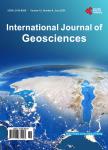Air Pollution Prediction in Warri and Its Environs Using Quality Parameters
Air Pollution Prediction in Warri and Its Environs Using Quality Parameters作者机构:Department of Environmental Management and Toxicology College of Science Federal University of Petroleum Resources Effurun Nigeria
出 版 物:《International Journal of Geosciences》 (地球科学国际期刊(英文))
年 卷 期:2023年第14卷第6期
页 面:531-546页
学科分类:07[理学] 070602[理学-大气物理学与大气环境] 0706[理学-大气科学]
主 题:Geostatistics Air Pollution Fossil Fuel Combustion Environmental Monitoring
摘 要:Air pollution is a major environmental problem in the Niger Delta Area (NDA) of Nigeria primarily due to oil and gas-related operational activities. Identifiable sources of air pollution in the NDA include gas flaring, vehicle emissions from internal combustion engines, crude oil pollution, etc. The aim of this research is to evaluate the concentration of air pollutants from crude oil-related activities using air quality parameters in Warri during seasons peculiar to the area of study. The Warri metropolis, one of Nigeria’s largest oil cities, was the sampling region under research in this study. An Aeroqual handheld mobile multi-gas monitor fitted with different sensors of (Carbon Monoxide (CO), air quality multi-meter for Particulate Matter (PM2.5 and PM10), Volatile Organic (VOC), Sulphur dioxide (SO2), Ammonia (NH3), Methane (CH4), and air quality index (AQI), was used for the collection of air quality parameter. Linear regression was used to create the model, which was then used to predict the extent of pollution in the locations of study. The average mean concentrations of air pollutants such as CO, NO2, CH4, VOC, NH4, and SO2 were measured at all sampling sites during wet and dry seasons. The results showed that the levels of these pollutants were above the WHO permissible limits for the majority of the air quality parameters studied in all sixteen locations. The concentration levels of most of the pollutants were higher in the dry season than in the rainy season. The study also found that the pollutants were mainly from fossil fuel combustion and road traffic emissions. Overall, the research provided monitoring data for all air quality pollutants under investigation in the study area and demonstrated that these concentrations exceed regulatory guidelines.



